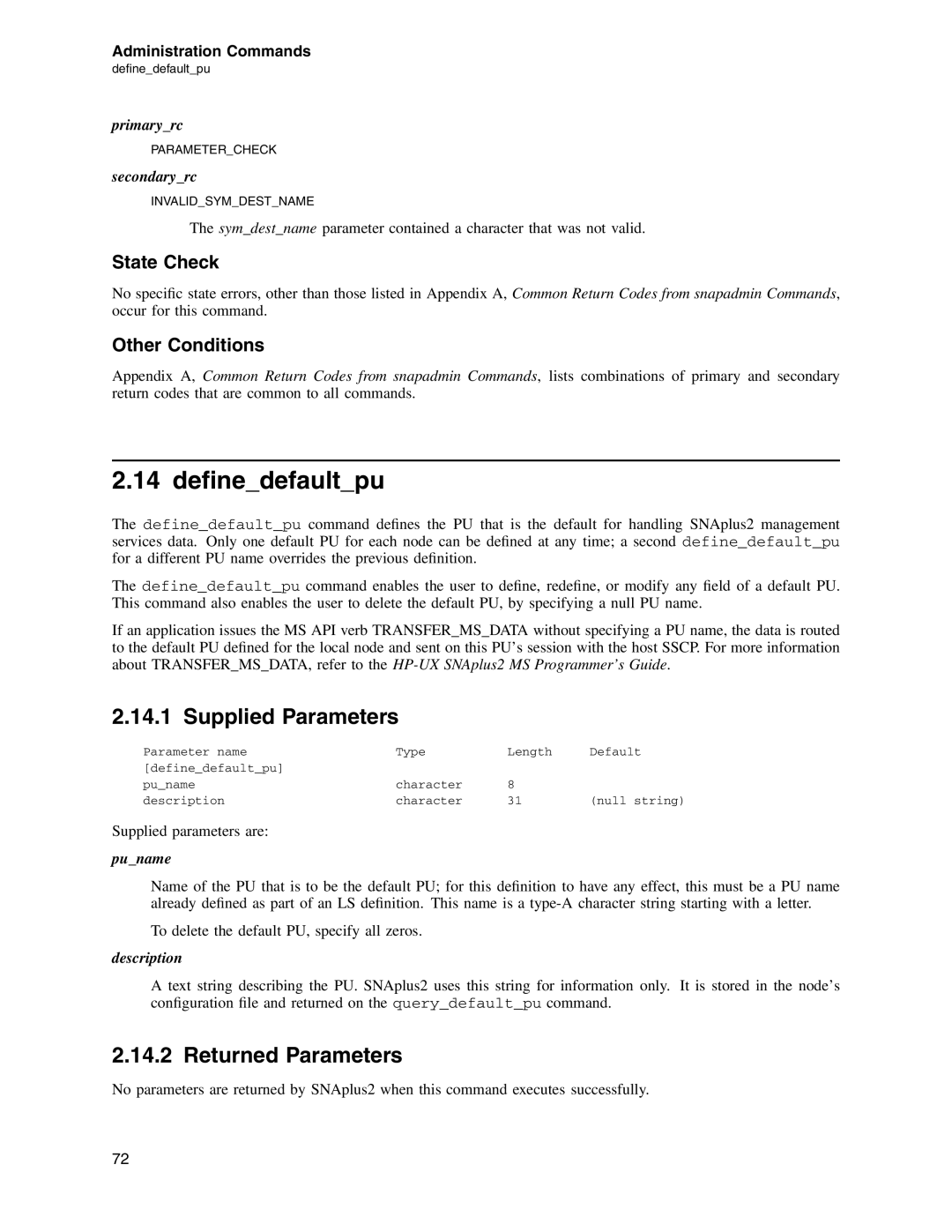Administration Commands
define_default_pu
primary_rc
PARAMETER_CHECK
secondary_rc
INVALID_SYM_DEST_NAME
The sym_dest_name parameter contained a character that was not valid.
State Check
No specific state errors, other than those listed in Appendix A, Common Return Codes from snapadmin Commands, occur for this command.
Other Conditions
Appendix A, Common Return Codes from snapadmin Commands, lists combinations of primary and secondary return codes that are common to all commands.
2.14 define_default_pu
The define_default_pu command defines the PU that is the default for handling SNAplus2 management services data. Only one default PU for each node can be defined at any time; a second define_default_pu for a different PU name overrides the previous definition.
The define_default_pu command enables the user to define, redefine, or modify any field of a default PU. This command also enables the user to delete the default PU, by specifying a null PU name.
If an application issues the MS API verb TRANSFER_MS_DATA without specifying a PU name, the data is routed to the default PU defined for the local node and sent on this PU’s session with the host SSCP. For more information about TRANSFER_MS_DATA, refer to the
2.14.1 Supplied Parameters
Parameter name | Type | Length | Default |
[define_default_pu] |
|
|
|
pu_name | character | 8 |
|
description | character | 31 | (null string) |
Supplied parameters are:
pu_name
Name of the PU that is to be the default PU; for this definition to have any effect, this must be a PU name already defined as part of an LS definition. This name is a
To delete the default PU, specify all zeros.
description
A text string describing the PU. SNAplus2 uses this string for information only. It is stored in the node’s configuration file and returned on the query_default_pu command.
2.14.2 Returned Parameters
No parameters are returned by SNAplus2 when this command executes successfully.
72
